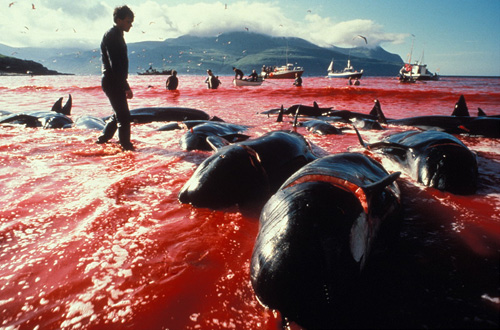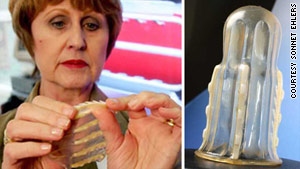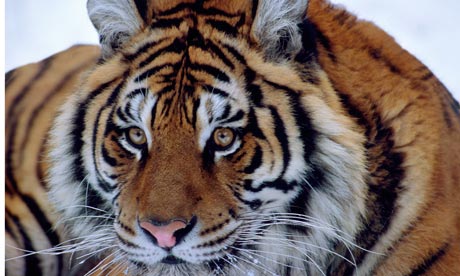
from the
Mo Ibrahim Foundation website via the
Mo Ibrahim facebook page(
to read/download the full press release go here)
The Prize Committee met yesterday to discuss the award of the 2010 Mo Ibrahim Prize. Following its deliberations, the Prize Committee informed the Board of the Foundation that it had not selected a winner.
Last year the Prize Committee announced that it had considered some credible candidates, but after in depth review could not select a winner. This year the Prize Committee told the Board that there had been no new candidates or new developments and that therefore no selection of a winner had been made.
The Ibrahim Prize recognises and celebrates excellence in African leadership. The prize is awarded to a democratically elected former African Executive Head of State or Government who has served their term in office within the limits set by the country's constitution and has left office in the last three years.
The first winner of the Prize was Joaquim Chissano, former President of Mozambique in 2007,
followed by Festus Mogae, former President of Botswana in 2008. In addition Nelson Mandela was made an Honorary Laureate in 2007.
Responding to the Prize Committee’s decision, Mo Ibrahim, the founder and Chairman of the Mo
Ibrahim Foundation, said: “The Board respects the decision of the Prize Committee not to select a winner for the 2010 prize."
The Prize Committee, which is independent from the Board, is a unique repository of experience and expertise.
“Whether there is a winner or not, the purpose of the Foundation is to challenge those in Africa and across the world to debate what constitutes excellence in leadership.
“The standards set for the Prize winner are high, and the number of potential candidates each year is small. So it is likely that there will be years when no Prize is awarded. In the current year, no new candidates emerged.
“Many African countries are making great strides not just economically, but also in terms of their
governance. The Ibrahim Index, which measures the performance of African countries across around 80 governance criteria, indicates that the overall standard of governance is improving.
“Nevertheless, the Foundation is anything but complacent about the standards of governance in
Africa. Its mission is to improve governance and nurture leadership in Africa. It is clear that much more needs to be done. It is for that reason that the Foundation has decided to promote
complementary initiatives.
“For example, the Foundation will shortly be launching the Ibrahim Leadership Fellowships, a
selective programme designed to identify and prepare the next generation of outstanding African leaders by providing them with mentoring opportunities in key multilateral institutions. The programme will seek to attract a number of highly qualified and talented professionals each year to serve in leading institutions whose core objective to improve the prospects of the people of Africa.
“The Foundation is currently working with pan-African organisations to design the fellowships. It will announce further details of them at the Foundation’s annual celebration and forum on governance to be held in Mauritius in November. Applications will open shortly afterwards and we expect the first Leadership Fellows to begin their Fellowships early next year.
“The task of promoting good African leadership is more important than ever. Good governance is
crucial if African people are to share in the strong economic growth that many are predicting for
Africa. There are many ways to support great leadership. The prize is one such way, the fellowships will be another.”
1. The decision of the 2010 Ibrahim prize was determined by the Prize Committee of seven
eminent individuals. The Prize Committee assesses democratically elected former Executive
Heads of State or Government from sub-Saharan African countries who have served their
term in office within the limits set by their country’s constitution, and have left office within
the last three years
2. The Ibrahim Prize consists of US$5million over 10 years and US$200,000 annually for life
thereafter. The Foundation will consider granting a further $200,000 per year, for 10 years,
towards public interest activities and good causes espoused by the winner.
3. The Prize Committee is chaired by former United Nations Secretary-General and Nobel
Laureate Kofi Annan and comprised of Martti Ahtisaari, former President of Finland and
Nobel Laureate; Aïcha Bah Diallo, former Minister of Education in Guinea and Deputy
Assistant Director General for Education at UNESCO; Mohamed ElBaradei, former Director
General of the International Atomic Energy Agency and Nobel Laureate; Graça Machel,
Chancellor of the University of Cape Town, and former Minister of Education and Culture in
Mozambique; Mary Robinson, former President of Ireland and former UN High
Commissioner for Human Rights (and Board member of the Foundation); Salim Ahmed
Salim, former Secretary-General of the Organisation of African Unity and former Prime
Minister of Tanzania (and Board member of the Foundation)
4. The Mo Ibrahim Foundation was launched in October 2006 and is committed to supporting
excellence in African leadership. It was founded by Mo Ibrahim, one of Africa’s most
successful business entrepreneurs, and has the support of a number of global figures,
including Kofi Annan, Nelson Mandela and Amartya Sen. The Foundation aims to stimulate
debate around, and improve the quality of, governance in Africa
5. The previous winners of the Ibrahim Prize are Festus Mogae, the former President of
Botswana, Joaquim Chissano, the former President of Mozambique and Nelson Mandela,
who was made an Honorary Laureate in recognition of his extraordinary leadership qualities
and achievements
6. The full data of the 2009 Ibrahim Index of African Governance has been published on the
Foundation’s website:
http://www.moibrahimfoundation.org/en/section/the-ibrahim-indexThe 2010 Index will be released in October
 From examiner.com via the SeaTurtle.org facebook page
From examiner.com via the SeaTurtle.org facebook page





























